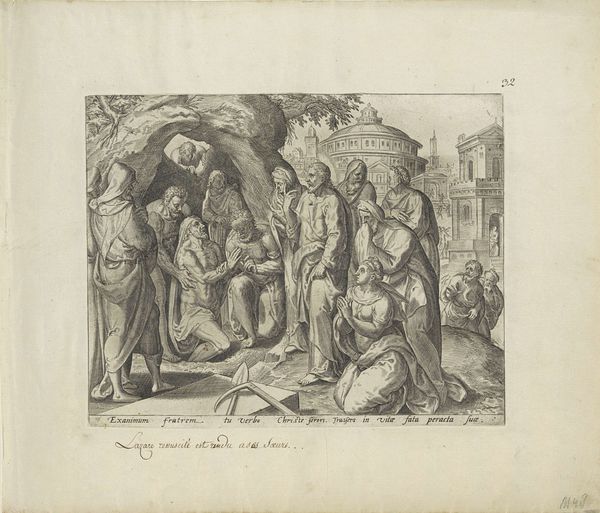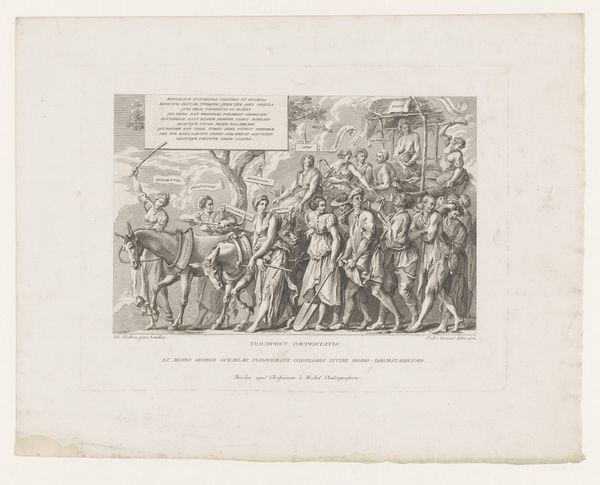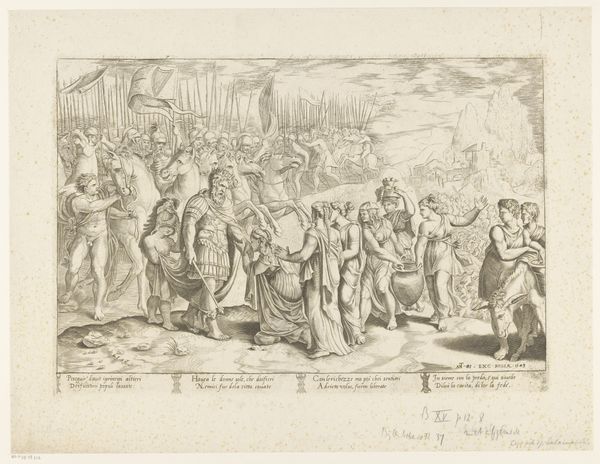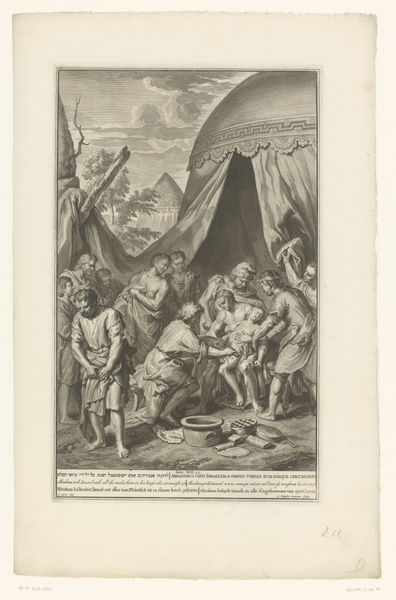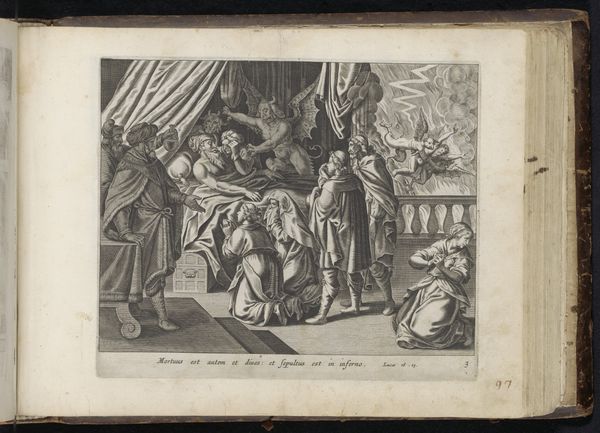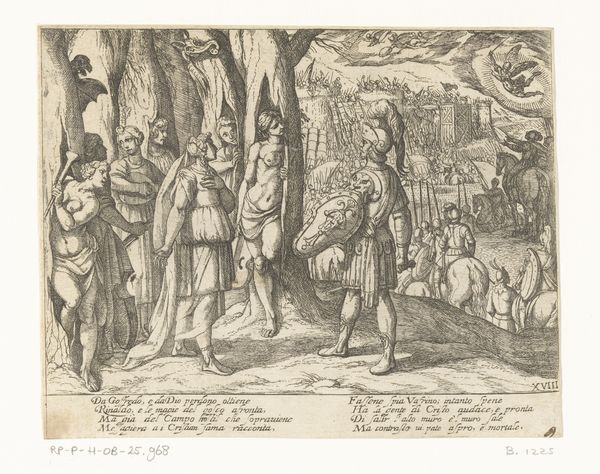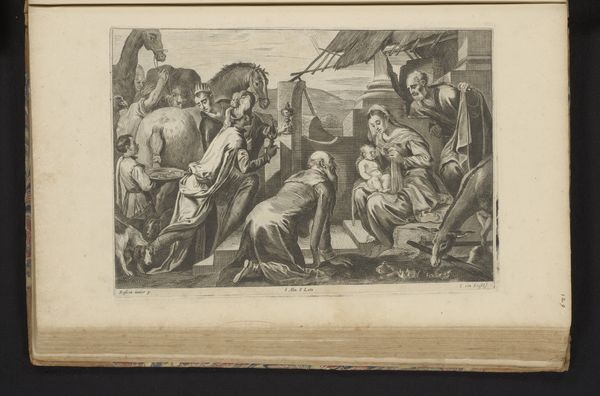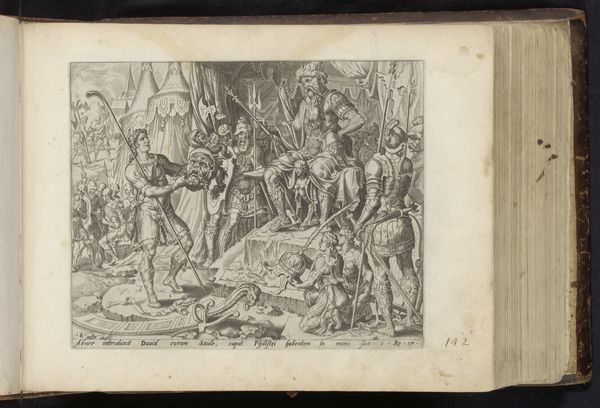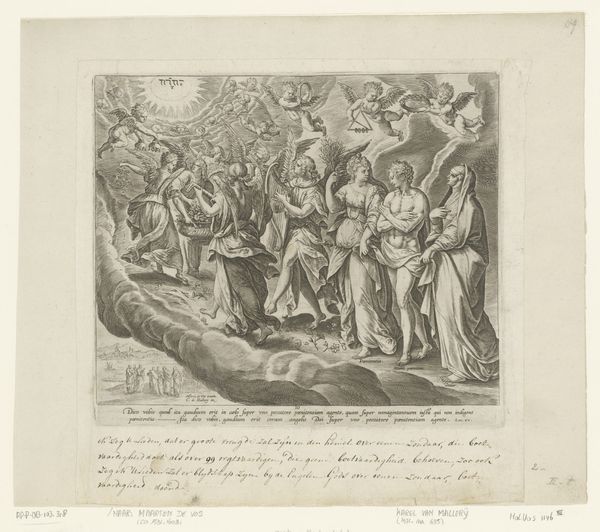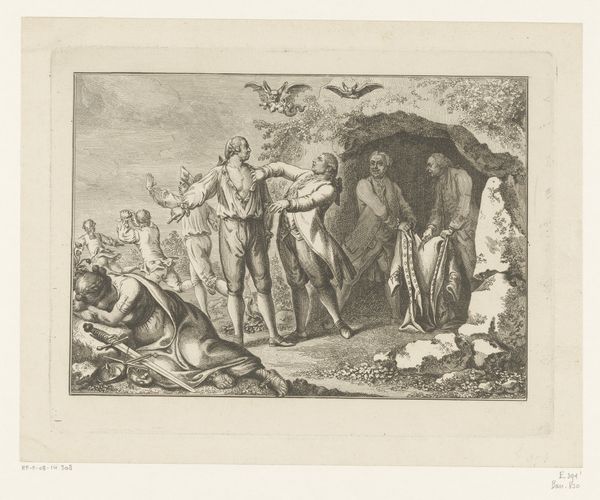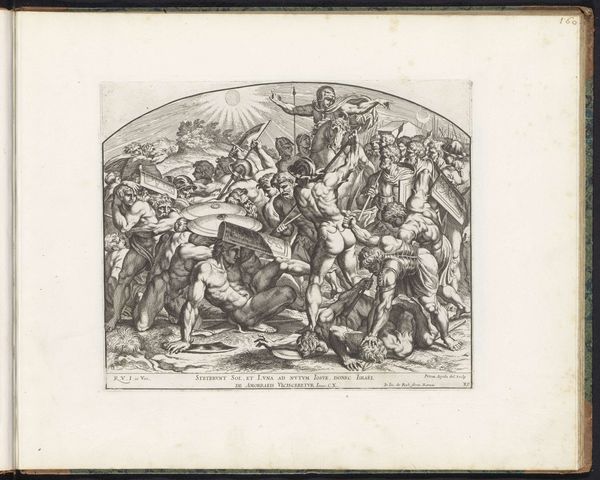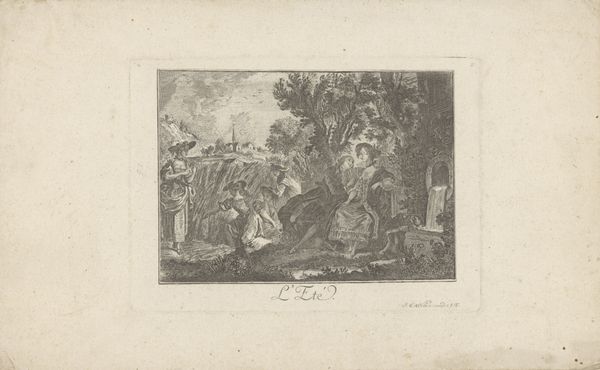
Dimensions: height 199 mm, width 228 mm
Copyright: Rijks Museum: Open Domain
Philips Galle made this print, "Destruction of the Idols of Baal," sometime in the late 16th century. It’s an etching, meaning the artist would have used a sharp needle to draw this scene into a wax-covered metal plate, which was then submerged in acid, and finally inked and printed. Look closely, and you can see how the linear quality of etching lends itself well to the depiction of destruction. The figures are caught in mid-action, their gestures rendered with quick, decisive strokes. The idols themselves are carved and solid forms, violently disrupted. The print is a product of skilled labor. It captures the labor of iconoclasm, the physical act of dismantling and destroying the idols. The work is not just about religious zeal. It’s about the labor involved in both creating and destroying these images, reflecting the social and economic forces at play during the Reformation. It prompts us to consider the power dynamics inherent in the making and unmaking of cultural symbols.
Comments
No comments
Be the first to comment and join the conversation on the ultimate creative platform.

